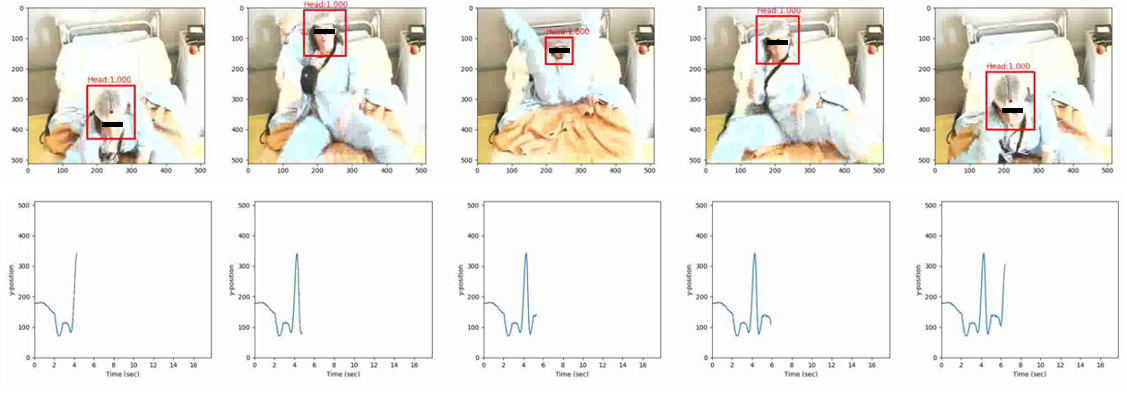Section: New Results
Quantified Analysis for Epileptic Seizure Videos
Participants : Jen-Cheng Hou, Monique Thonnat.
Epilepsy is a type of neurological disorder, affecting around 50 million people worldwide. Epilepsy's main symptoms are seizures, which are caused by abnormal neuronal activities in the brain. To determine appropriate treatments, neurologists assess manifestation of patients' behavior when seizures occur. Nevertheless, there are few objective criteria regarding the procedure, and diagnosis could be biased due to subjective evaluation. Hence it is important to quantify patients' ictal behaviors for better assessment of the disorder. In collaboration with Dr. Fabrice Bartolomei and Dr. Aileen McGonigal from Timone Hospital, Marseille, we have access to video recordings from epilepsy monitoring unit for analysis, with consent from ethics committee (IRB) and the patients involved.
Seizure Video Classification and Background Video Collection
In an epilepsy monitoring unit, EEG and video recording are usually collected. For patients who need brain surgery to remove lobes that produce seizures, stereo-EEG (SEEG) recordings are particularly measured. SEEG is an intrusive measurement and provides information of the seizure type. We have 86 seizure videos from 20 patients along with the corresponding SEEG conclusion (i.e. pre-frontal epilepsy, occipital epilepsy, etc.). In this study, the goal is to classify seizure videos to their seizure types. Classification was conducted by fine-tuning a pre-trained video classification model, I3D, with 10-fold cross-validation. Due to the relatively small volume of data we have and the challenging nature of our videos, the performance was not satisfactory enough. Inspired by recent semi-supervised works in leveraging large unlabeled dataset for better adaptation to certain tasks, we are collecting large volume of background videos in the epilepsy monitoring unit, in which patients' behavior are normal, such as eating, sleeping, and talking. The volume of the background video can be up to 1000 hours, which could be taken as unlabeled dataset for semi-supervised learning in our case.
Quantifying Rhythmic Rocking Movement with Head Tracking
In this study, six seizures from three patients with pre-frontal epilepsy were analyzed. The duration of rocking was 15-40 seconds, with marked regularity throughout each seizure. Our objective is to document time-evolving frequencies of antero-posterior rocking body movements occurring during seizures. We adopted MobileNet [39] as our backbone model for detecting head of the patient, and hence obtain the trajectories of head movement (see Figure 15). After smoothing the trajectories and find the valid peaks corresponding to the antero-posterior movement, we compute the time-evolving movement frequency for each seizure video. Whereas the rocking frequency varied substantially between patients and seizures (0.3-1Hz), coefficient of variation of frequency was low (). The study report is under review for a medical journal.


